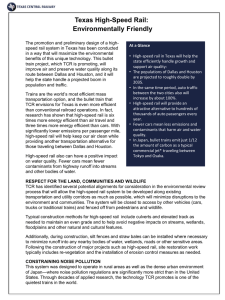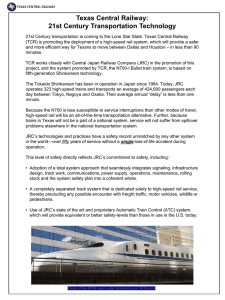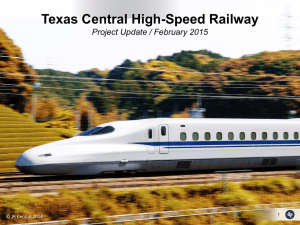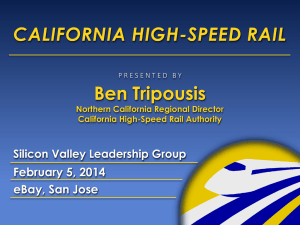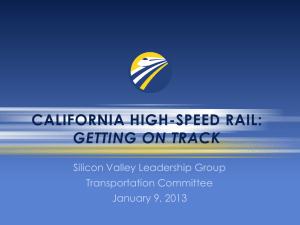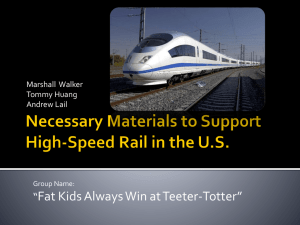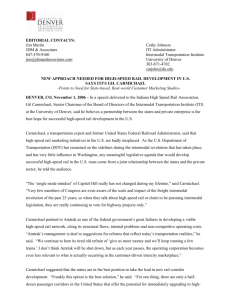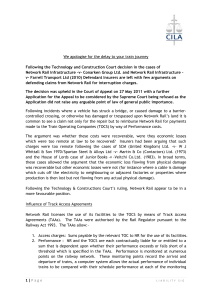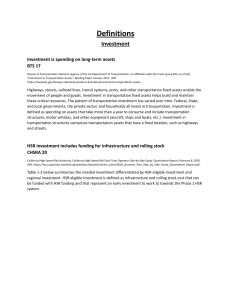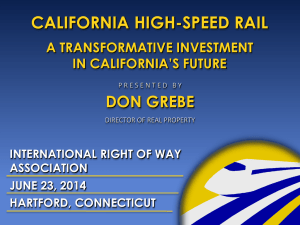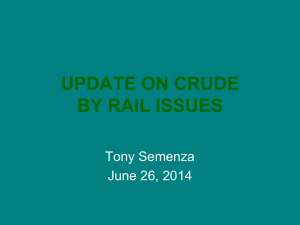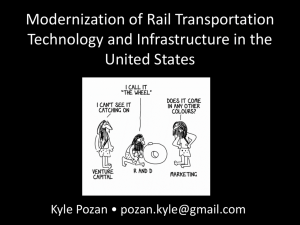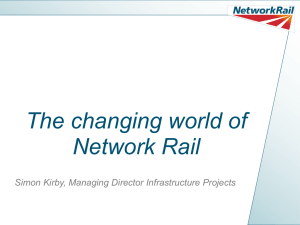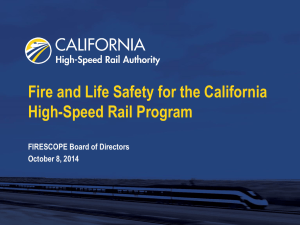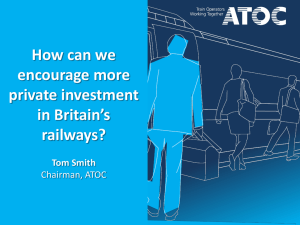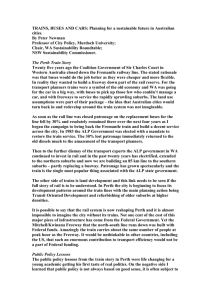Environmentally Friendly
advertisement
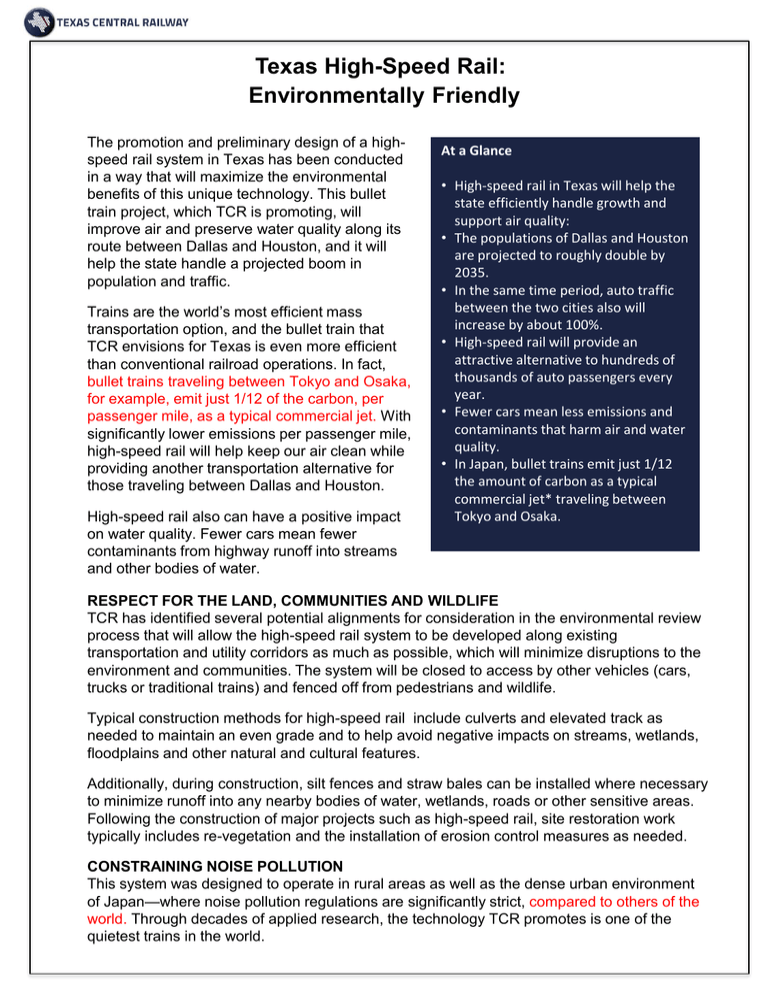
Texas High-Speed Rail: Environmentally Friendly The promotion and preliminary design of a highspeed rail system in Texas has been conducted in a way that will maximize the environmental benefits of this unique technology. This bullet train project, which TCR is promoting, will improve air and preserve water quality along its route between Dallas and Houston, and it will help the state handle a projected boom in population and traffic. Trains are the world’s most efficient mass transportation option, and the bullet train that TCR envisions for Texas is even more efficient than conventional railroad operations. In fact, bullet trains traveling between Tokyo and Osaka, for example, emit just 1/12 of the carbon, per passenger mile, as a typical commercial jet. With significantly lower emissions per passenger mile, high-speed rail will help keep our air clean while providing another transportation alternative for those traveling between Dallas and Houston. High-speed rail also can have a positive impact on water quality. Fewer cars mean fewer contaminants from highway runoff into streams and other bodies of water. At a Glance • High-speed rail in Texas will help the state efficiently handle growth and support air quality: • The populations of Dallas and Houston are projected to roughly double by 2035. • In the same time period, auto traffic between the two cities also will increase by about 100%. • High-speed rail will provide an attractive alternative to hundreds of thousands of auto passengers every year. • Fewer cars mean less emissions and contaminants that harm air and water quality. • In Japan, bullet trains emit just 1/12 the amount of carbon as a typical commercial jet* traveling between Tokyo and Osaka. RESPECT FOR THE LAND, COMMUNITIES AND WILDLIFE TCR has identified several potential alignments for consideration in the environmental review process that will allow the high-speed rail system to be developed along existing transportation and utility corridors as much as possible, which will minimize disruptions to the environment and communities. The system will be closed to access by other vehicles (cars, trucks or traditional trains) and fenced off from pedestrians and wildlife. Typical construction methods for high-speed rail include culverts and elevated track as needed to maintain an even grade and to help avoid negative impacts on streams, wetlands, floodplains and other natural and cultural features. Additionally, during construction, silt fences and straw bales can be installed where necessary to minimize runoff into any nearby bodies of water, wetlands, roads or other sensitive areas. Following the construction of major projects such as high-speed rail, site restoration work typically includes re-vegetation and the installation of erosion control measures as needed. CONSTRAINING NOISE POLLUTION This system was designed to operate in rural areas as well as the dense urban environment of Japan—where noise pollution regulations are significantly strict, compared to others of the world. Through decades of applied research, the technology TCR promotes is one of the quietest trains in the world.
